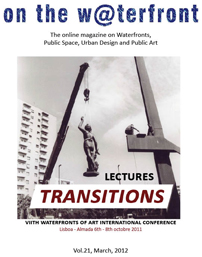Lima: public space in transition, the place of democracy 2006
Keywords:
Public spaces, citizenship, Plaza de la Democracia, Social protest, New proposal, "Urin Kancha"Abstract
The urban structure of a city is a living reality in constant transformation inhabited, shared and appropriated by citizens. In particular, public spaces, considered as spaces for all, are sensitive scenarios where the citizenship can express “visibly” this appropriation. The Marcha de los Cuatro Suyos, and the subsequent violence that led to the destruction and burning of the Banco de la Nación were the initial step of a political process that permitted the transition towards democracy en general election the next year, stopping President’s Alberto Fujimori intention to maintain himself as a dictator. A result of this transition was the building of the Plaza de la Democracia in the empty space left by the fire. However, even if Plaza de la Democracia was built in the light of social protest, the lack of political will of Alejandro Toledo’s government Toledo to link and coordinate public art, landscape and heritage did not function as a valid response. Our proposal is an architectural structure “Urin Kancha”, to raise public awareness of this public space with a monument that has a double purpose: to recall the huacas, archeological buildings built in Peruvian coast, and to recall the space as a tomb, in order to pay tribute to the six dead guards of the Banco de la Nación.Downloads
Published
2012-03-10
How to Cite
Hamann Mazuré, Johanna. 2012. “Lima: Public Space in Transition, the Place of Democracy 2006”. on the w@terfront. Public Art.Urban Design.Civic Participation.Urban Regeneration, no. 21 (March):83-96. https://revistes.ub.edu/index.php/waterfront/article/view/18757.
Issue
Section
Articles
License
The
 licence allows: Share — copy and redistribute the material in any medium or format and Adapt — remix, transform, and build upon the material for any purpose, even commercially.The licensor cannot revoke these freedoms as long as you follow the license terms. Author's rights are protected by the ISSN 1139-7365. On the w@terfront has no restrictions respect the copyright by the authors and does allow authors to retain the publishing rights without restrictions.
licence allows: Share — copy and redistribute the material in any medium or format and Adapt — remix, transform, and build upon the material for any purpose, even commercially.The licensor cannot revoke these freedoms as long as you follow the license terms. Author's rights are protected by the ISSN 1139-7365. On the w@terfront has no restrictions respect the copyright by the authors and does allow authors to retain the publishing rights without restrictions.This journal does not apply any type of charge to the authors for the presentation or processing of the articles.







